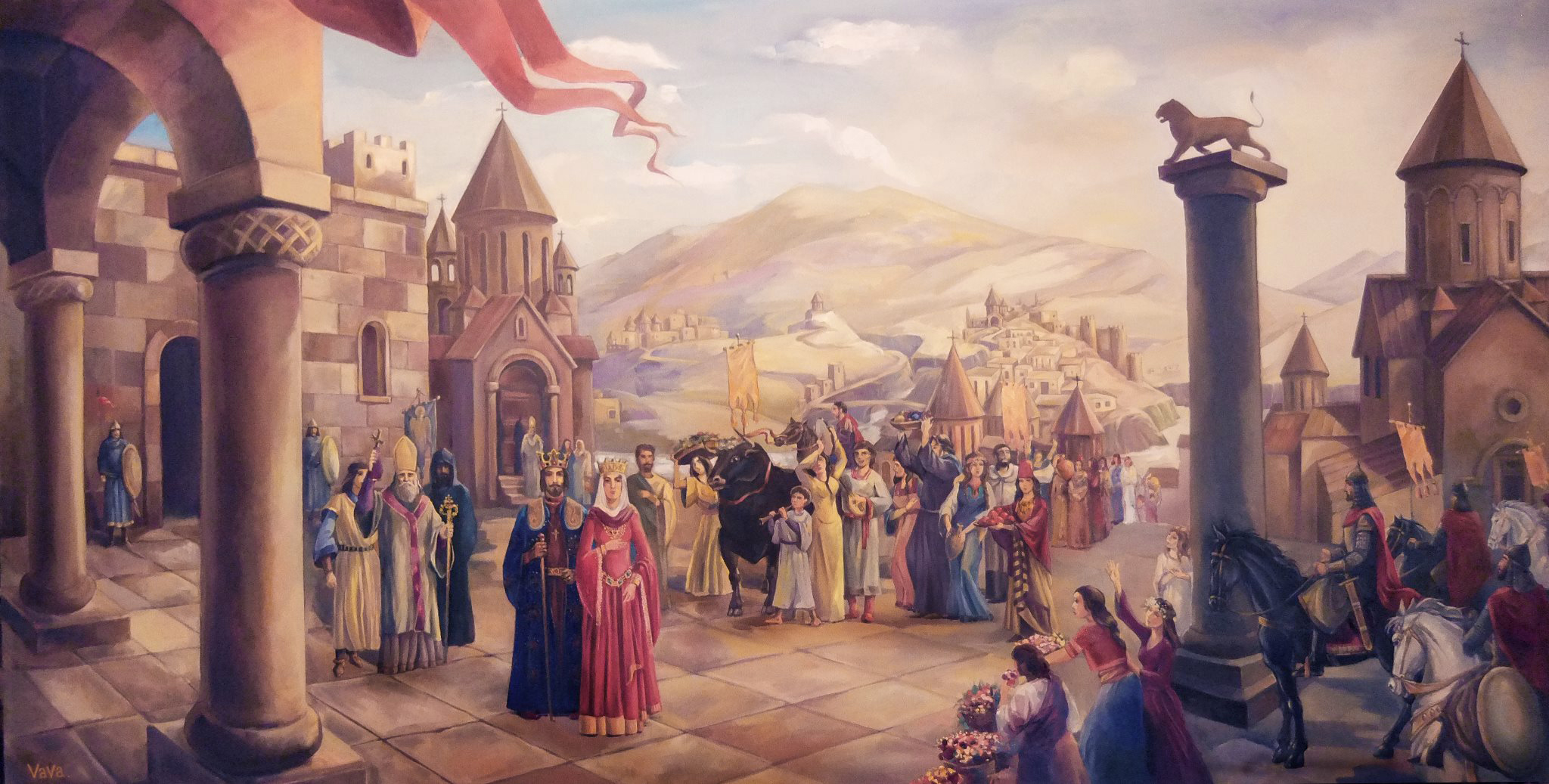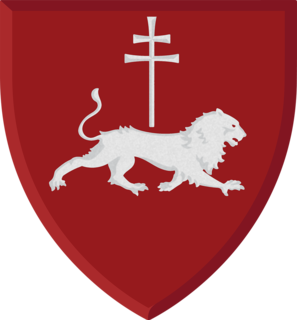Originating as vassals of the Kingdom of Armenia of antiquity, they rose to become the most prominent Armenian noble family during the period of Arab rule in Armenia, eventually establishing their own independent kingdom. Their domain included regions of the Kingdom of Armenia such as Shirak, Bagrevand, Kogovit, Syunik, Lori, Vaspurakan, Vanand, Taron, and Tayk. According to the modern historian Cyril Toumanoff, they were the progenitors of the Georgian royal Bagrationi dynasty.
The name of “Bagratuni” is derived from Bagarat, a Parthian variant of the Old Iranian name Bagadata (“God-given”). The Bagratuni family first emerged as nakharars, members of the hereditary nobility of Armenia, in the early 4th century. The Arshakuni dynasty, which ruled Armenia from 52 to 428, granted the family heritable rights. The first Bagratuni prince identified by historian Cyril Toumanoff, Smbat I, lived at the time of the Armenian conversion to Christianity (c. 301-314). Starting with Smbat, the Bagratunis held the hereditary titles of aspet, meaning “Master of the Horse” or the commander of the cavalry, and tagadir, which indicated their privilege of crowning Arshakuni kings upon their accession to the throne. Their domain included the region of Sper in the Çoruh River valley of Upper Armenia, which was famous for its gold and silver, and Tayk. The medieval Armenian historian Movses Khorenatsi claimed they had an ancestor, Smbat, who came to Armenia from Judea in 6th century BC, but modern historians regard this as an invention to give a biblical origin to the family. Toumanoff proposed instead that the Bagratunis were descended from the Orontids, the first identifiable ruling dynasty of ancient Armenia.
After the 7th-century Arab conquest of Armenia, members of the Bagratuni house often held the title of ishkhan (prince) of Armenia, although they were subordinate to a Muslim governor or ostikan appointed by the caliphs. The period of Arab rule in Armenia saw the decline of the power of the Mamikonians at the same time as the Bagratunis gained in prominence, as the Muslim governors favored the latter. During the collapse of Umayyad rule in 748, the Bagratuni ishkhan Ashot III reluctantly joined with the other Armenian nobles in a revolt against Arab rule. Ashot was blinded on the orders of Grigor Mamikonian after trying to withdraw from the rebellion, which failed after Grigor’s death in 749. Ashot “the Blind” was restored to nominal rule as ishkhan after the Abbasids reestablished Arab rule of Armenia in 750. In 774-775 sparapet Smbat VII Bagratuni led the Armenian nobility in an unsuccessful revolt against the Abbasid Caliphate, although part of the Bagratuni house opposed the rebellion. Smbat was killed at the Battle of Bagrevand along with Mushegh Mamikonian and many other Armenian nobles. After the failed rebellion, the Bagratunis lost control of their domains of Tmorik, Kogovit and their possessions in Vaspurakan, although their losses were less severe than those of the other Armenian noble families.
Smbat VII’s son Ashot Msaker restored the fortunes of the dynasty in the 9th century by waging war against the local Arab emir while remaining loyal to the Abbasid caliphs. Ashot Msaker (re-)acquired a number of territories for the Bagratuni family, which were divided between two of his sons: Bagrat II, who received Taron and Sasun along with the new title “Prince of Princes” (ishkhan ishkhanats), and Smbat “the Confessor”, who received the title sparapet and the holdings of Sper and Tayk. Meanwhile, Ashot Msaker’s uncle, Vasak, established himself in the Georgian region of Iberia; Vasak’s grandson Ashot I became the first ruler of Iberia from the Bagratuni dynasty c. 813. This branch of the dynasty would rule as kings of Georgia for centuries as the Bagrationis.







Responses